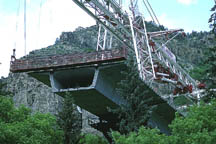STRUCTURAL ENGINEERING
Kavanagh Lecture - Biographical Sketch
The Thirteenth Thomas C. Kavanagh Memorial Structural Engineering Lecture
March 30, 2006
7:30 pm
Applied Research Laboratory Auditorium
Engineering for security
by
Jeremy Isenberg
Recently Retired President and CEO
Weidlinger Associates, Inc.
BIOGRAPHICAL SKETCH
During the 1970's and 1980's, Jeremy Isenberg contributed to design and analysis of protective structures. His ideas and implementation for energy-absorbing boundary conditions, soil-structure interface slip and the soil-island approach made it possible to undertake, at a time when computer capacity was much more limited than nowadays, large-scale computational modeling of structures such as missile silos and radar buildings exposed to blast. This made it possible to integrate the design and hardness assessment of such structures and to exploit, for the first time for such structures, confined concrete to achieve greater strength and ductility. The same techniques are being exploited in the post-cold war era at his firm, Weidlinger Associates, Inc., to retrofit structures to resist explosions from conventional weapons and terrorism. For this and related work in computational structural dynamics, he received the 1997 Ernest E. Howard Award of ASCE.
Beginning in 1975, he began collecting data from US earthquakes on the seismic performance of pipelines. Using utility maps, repair reports and interviews, he proposed that pipeline performance in areas where ground motions are dominated by traveling wave effects are closely related to the condition of the pipes as affected by corrosion. He further proposed that poor performance due to corrosion-induced leakage is a predictor of poor performance during earthquakes. This prediction was confirmed in subsequent US earthquakes, and is used by utility companies in seismically active areas to develop economical repair and replacement strategies for pipelines. To further this work, he established a field experiment in which full-size pipeline segments were built across the San Andreas Fault where the earthquake predicted by USGS occurred in September 2004. Data reduction is in process. For his leadership in the field of lifeline earthquake engineering, he received the 1998 C. Martin Duke Award of ASCE.
In 1999 he was elected to the U.S. National Academy of Engineering, which cited him for contributions to designing and testing protective structures and detecting seismically vulnerable underground pipelines.
Beginning in 1987 he lead a group at Weidlinger Associates in converting computational techniques developed for military applications to civilian uses. This has resulted in several new technologies and software products currently in use in the optical and medical imaging fields. One of these, a procedure for simulating ultrasound for imaging of body tissues and cavities, is used throughout the medical ultrasound industry for the design of efficient transducers. These techniques have reduced the product cycle time by about 50%. Simultaneously, he personally developed imaging software to facilitate the planning of ultrasound weld inspections required for nuclear power plant licensing.
His technical background was the basis for leadership of Weidlinger Associates, the Civil and Structural Engineering firm of which he was President and CEO from 1993 through 2005. During his tenure the firm grew from $13M to $50M annual revenue and from 3 offices to 9. During that period, the firm was twice recognized by Structural Engineer Magazine as the Best Structural Firm in America to work for. During this period, he remained active in the ASCE Technical Council on Lifeline Earthquake Engineering, whose Executive Committee he chaired and whose quadrennial conference in 1995 he co-chaired. During the past 9 years he has been prominent in bringing the ASCE Structural Engineering Institute into existence --he helped to draft the original SEI Bylaws-- and to advance it toward maturity, most recently by serving as president of its Board of Governors from 2003-2005. His contributions were recognized in the 2003 Tewksbury award of SEI.
He is recognized for synthesizing academic research
with engineering practice, serving on several university Civil Engineering Department
advisory boards and an Engineering College Dean's Council. In recent years, he
has been invited to deliver endowed lectures at University of Colorado, Stanford,
New Jersey Institute of Technology and the University of British Columbia as
well as at the forthcoming Kavanagh Memorial Lecture at The Pennsylvania State
University. He was also keynote speaker at the 2004 ASCE Engineering Mechanics
Biennial Conference.

